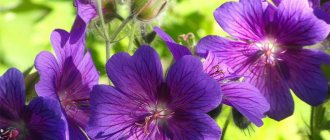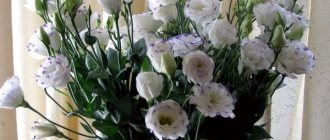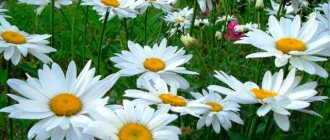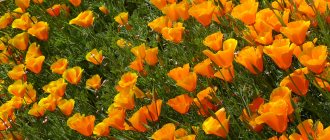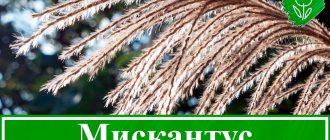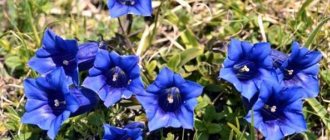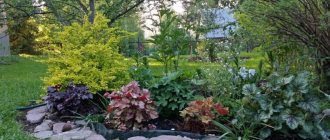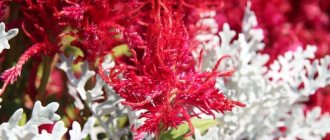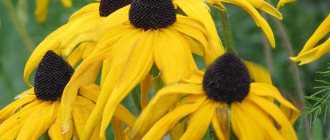This is one of the most popular garden plants with universal uses. Geranium is great as a houseplant and garden plant, even as a ground cover. It looks great in modern gardens. Some species readily grow in the sun, others in the shade. Let's find out how perennial garden geranium is grown - planting and care in open ground, look at photos of species and varieties, find out how to provide the plant so that it decorates the garden all season long.
Characteristics of garden geranium
Garden geranium is a beautiful lush compact bush that is a herbaceous perennial. The height of the plant is varied: there are both low-growing and tall species.
The leaves are dense, carved with lace. There are different sizes and shapes - they have rounded or pointed edges.
The buds of the plant reach up to 5 cm in diameter and consist of approximately 5 petals. The color of geranium flowers has a wide color palette. There are all shades of red, white, pink, and purple. Plants of the geranium family have a pleasant sweet aroma.
The most important advantage of this species is its health: the flower is immune to drought, unpretentious in care and has excellent immunity.
The difference between garden geranium and indoor geranium
The indoor geranium or pelargonium was grouped with the geranium in 1738, despite the fact that they are genetically different. Outwardly they are very similar, but have many differences. For example, plants belong to the same family, but they cannot interbreed.
The table discusses other distinctive features.
| Sign | Sadovaya | Room |
| Habitat | Temperate climate zone - Mediterranean region, Belarus, Central Asia, regions of the mountainous Caucasus, Siberia and the Far East. | Mainly South Africa. |
| Sensitivity to weather | Feels great in open ground all year round and is very frost-resistant. | Heat-loving, wintering exclusively indoors. It can only be in the open ground during the summer season. |
| Seeds | "Geranius" comes from the Greek word for "crane". It’s not without reason that the seeds resemble the head of this bird in appearance. | "Pelargonium" means "stork". Similarly. |
| Flowers | They consist of 5-8 petals of the correct shape, they, in turn, form inflorescences, in which there are about 5 such flowers. | Petals of various irregular shapes form flowers of multiple inflorescences. |
| Stamens | To 10. | Until 7. |
| Color | There are no red shades in nature. | Blue ones are not found. |
Features of cultivation
By and large, geranium is a fairly unpretentious plant and does not require any special care. This is a perennial plant that tolerates winter cold well and does not require digging in the fall.
However, there are several nuances, failure to comply with which can lead to disastrous results.
The first rule that must be followed is the choice of location. Sunny or partial shade is best. Some species, for example, forest geranium, red-brown, Roberta and all varieties related to them, feel great in fairly shady places. Therefore, they are perfect for landscaping shady areas.
Light, loose soil is required. The root system of geranium is quite superficial and does not have a very long rhizome, so the distance between the bushes must be large. When planting, the soil must be dug up to the depth of a shovel, humus or special soil mixtures for geraniums must be added.
Another feature is the ability to “spread” across the territory - geranium is an excellent ground cover plant. And for this feature or characteristic (as you like to call it), it is highly valued by gardeners. This is especially true for Cantabrian geranium, large-rhizome, Wallich.
Some species grow well under trees. It is used to fill voids in flower arrangements, flower beds and other landscape structures.
Types and varieties of geraniums
Recently, the popularity of using the plant in landscape design has been increasing due to its interesting appearance and properties, such as frost resistance and unpretentiousness.
There are about 400 varieties of geranium. There is a conditional division according to the height of the bush: low ones up to 50 cm, high ones - over 50 cm. Generally speaking, on the territory of Russia 4 large species can be distinguished:
- large-rhizome crane grass;
- dark brown cranebird;
- southern European cranebird;
- fur-flowered geranium.
| View | Description | Varieties and hybrids |
| Bolotnaya | A perennial with branched short roots. The height of the bush is about 30-70 cm. The buds are 4 cm in girth, 2-3 per inflorescence, mostly lilac in color. Flowering is observed in the first two summer months. It prefers humidity, so it grows in areas with swamps, meadows and forests. Habitat: European Russia, Belarus, Ukraine. The plant is valued for its healing qualities: help with colic, ear diseases, gout, diseases of the genitourinary system, rheumatism; normalization of heart rate. | – |
| Gorgeous | A very beautiful spreading shrub about 60 cm. Blue flowers form inflorescences of 2-3 flowers. Flowering can be observed throughout the summer months. The most interesting thing about this species is the leaves. They have a fluffy dissected shape and have an interesting feature - in the fall they turn from green to red. | Alan Mayes, Blue Blood, Mrs. Kendall Clark, Rosemoor. |
| Georgian | An unpretentious bush that grows up to 80 cm in height. You can find the plant in nature in the meadows of the Caucasus. The roots are remarkable - they contain natural black coloring pigments. Volumetric buds of a purple hue with dark inclusions. The flowering period is from July to September. The foliage is fluffy with a very interesting polygonal sharp green-grayish shape. | – |
| Red-brown | Carpathian bush up to 80 cm in height with large basal leaves. They have an interesting shape and pattern: dark purple stripes appear on a grayish tint towards the end of summer. The plant has small purple flowers, the petals of which have wavy edges, bloom in July-August. | Langthorn's Blue, Lily Lovell, Samobor, Album. |
| Blood red | A hemispherical shrub with a height of about 60 cm. Its distinctive feature is its large single flowers, fuchsia or purple color. Blooms all summer. The leaves of the plant will change color to red in autumn. This type of geranium has healing properties and is used for: viruses, fungi, infections, germs and bleeding. Tinctures are often used | Alan Bloom, Apfelbute, Ankum's Pride, Canon Miles, Elke, Nana, Prostratum. |
| Lesnaya | Shrub 80 cm tall with purple flowers. Flowering is very short, only 3 weeks starting in May or June. It grows in the wild in Western Siberia, Central Asia, and Europe. | Mayflower, Album, Birch Lilac. |
| Lugovaya | The plant develops only in well-lit areas of Eurasia. It has large flowers of various colors: from red to blue, from blue to purple. Monthly flowering begins in June. It has a green coloring pigment. It is used in medicine as a sedative, antimicrobial and anti-inflammatory agent. | Algera Double, Cluden Sapphire, Ilja, Splish Splash. Jonson's Blue, Brookside, Kashmir Blue, Orion. |
| Small-stamen or Armenian | Perennial, reaching 1.2 m with long leaves. Their color changes depending on the season: in the summer they will turn green, in the spring they will turn crimson, and in the fall they will turn red. The plant blooms in June, the flowers are small and fuchsia in color. | Bressingham Flair, Ann Folkard. |
| Flat petal | A spherical perennial shrub, up to half a meter tall and up to 1 m in girth. It has pubescent green leaves and purple flowers. | – |
| Endressa or Perenean | Due to its geographical growth, it is a bush with long roots, spreading, half a meter high. Large green leaves about 10 cm long and small pink flowers. Loves well-drained soil and partial shade. | Beholder's Eye, Wargrave Pink, Betty Catchpole. |
| Himalayan | It has developed roots, the height of the bush is no more than 60 cm. The leaves are dissected in shape with large buds with a girth of up to 5 cm. They are painted in colors from blue to purple, with red veins. Flowering from late spring until early autumn. Loves loose and well-drained soil. It can be found in the territories of Afghanistan, Tibet, Tajikistan and Himalayan meadows. | Baby blue, Gravetye, Irish Blue, Plenum and hybrids Johnson's Blue and Rozanne. |
| Dalmatian | A low bush up to 15 cm high and 50 cm wide with small flowers of pale pink color. Blooms in summer. The leaves are dissected and become red when the temperature drops greatly. Grows in Montenegro and Albania. | – |
| Ashy | Small bush with bright pink flowers. Flowering lasts only 20-40 days from the first month of spring. The leaves are grayish-greenish in color, have a dissected shape, about 5 cm in length. They live in Albanian and Balkan meadows. | Ballerina, Splendens, Subcaulescens. |
| Renard | A perennial plant with a thick rhizome, about 30 cm tall. It has pimply olive-colored leaves and white flowers with purple gaps. The homeland of this geranium is the Caucasus. | – |
| Roberta | Half a meter tall plant. The foliage is similar to fern leaves and may change color to orange in the fall. The flowers are small, light pink. The stem is covered with small reddish hairs. The species is notable for the fact that it grows quietly in high mountain areas and prefers shade. Grows in the forests of Eurasia and North America. | – |
| Wallich | The low ground cover grows up to 30 m in height and up to half a meter in width. It has long leaves and large purple flowers with a white center. Flowering period from mid-summer to mid-autumn. Found in northeast Afghanistan and Kashmir. | Buxton's Variety, Buxton's Blue, Syabru, Crystal Lake. |
| Large rhizomatous or Balkan | A spherical, low-growing shrub with branched roots. The variety is tolerant to lighting. The leaves are round in shape and divided into parts. The rich green color turns red in autumn. The flowers come in bright colors: pink, purple. The plant has a pleasant smell. Habitat: Alps and Balkans. Its roots can be used as a natural flavoring in cooking. Geranium oil has wound healing and soothing properties. | Bevan's Variety, Czakor, Lohfelden, Ingwersen's Variety, Inversen, Spessart, Variegata. |
| Cantabrian | A hybrid obtained from crossing Dalmatian and large-rhizome geraniums. The miniature perennial has glossy leaves and small flowers in white, pink and purple. | Westray, St. Ole, Biokovo, Cambridge. |
Choosing a favorable place
To get geraniums that bloom for a long time in the landscape design of your dacha, you need to create favorable conditions for it. At the initial stage, you should select a place that meets the requirements for the quality development of the plant. Preference is given to open, sunny areas of the dacha; semi-shaded areas are also acceptable.
Pelargonium loves moist air and fertile soil with good drainage properties.
Advice! When choosing a place in landscape design for classic types of geranium, the location of the groundwater level is taken into account; the plant does not like moisture being too close to the root system.
Propagation of garden perennial geranium
The crane bird can be propagated in two ways:
- Seed is a labor-intensive and difficult method. As a result, it turns out that some geraniums are not able to produce their own seeds, and some reproduce on their own and disperse them. To propagate in this way, it is necessary to choose the most attractive species that will bloom only after a year.
- Vegetative or cutting is a method of dividing part of the root. It is recommended to carry out this procedure in the spring. First you need to prepare the soil: add compost and peat fertilizers. Next, the sprout should be planted in such soil. In the future, it is necessary to ensure regular watering and feed the seedling a month after planting.
Is shaping necessary?
Pruning geraniums is often ignored by novice gardeners. As a result, the bush becomes lanky, ugly, loses its splendor, the flowers become smaller, or even disappear completely.
To preserve the plant’s attractive appearance, help it conserve vitality for the transition to a dormant state and ensure its abundant, long-lasting flowering next season, you need to carry out the shaping procedure in the fall.
You can increase bushiness and enhance plant growth through timely formation
Note: zonal geraniums especially need annual pruning. Royal ones are not touched until they reach 2 years of age.
Pruning is done only after the plant has completely bloomed. Fading flowers, dried and elongated shoots are removed. It is also recommended to cut off some of the side shoots, especially those growing inside the bush. They themselves are shaded and shade the basal flowers, increasing the chance of them being infected by fungi. In addition, such shoots will not produce flowers, but they will extract a lot of nutrients from the plant.
The geranium is cut with a sharp, disinfected blade, diagonally, above the leaf node.
The tops of cut shoots can be used to produce new flowering geraniums. This is an excellent breeding material. Only shoots cut in winter from dormant plants are not suitable for rooting.
Planting and caring for garden geraniums
Planting is best done in autumn or spring. It is necessary to prepare the soil: add peat or humus. The soil needs to be watered and mulched. Before planting, divide the roots of the plant. When planting them, it is recommended to maintain a distance of approximately 30 cm between them.
Growing undemanding geraniums is not difficult. Once a year it is enough to feed the soil with mineral fertilizers. Water regularly, maintaining average humidity. It fits well with other plants. The flower is resistant to diseases and pests, as it has a scent that is repulsive to them.
How to properly care?
Abundant, lush and long-lasting flowering depends on proper care.
Watering
Regular and moderate watering is required. The plant is also able to tolerate short-term drought without severe drying out of the soil. Lack of watering affects the appearance of the plant - the leaves wither, the inflorescences become smaller and fall off. Excessive watering is also dangerous. It leads to flower disease. For irrigation, settled or rainwater is used. Garden pelargonium does not need spraying.
Temperature
Garden pelargonium prefers a temperature of no more than +20 degrees. On hot days, it is best to shade the plant.
Top dressing
- For the splendor and density of the bush, as well as lush green foliage and many inflorescences, fertilizers containing phosphorus and potassium are used.
- Phosphorus fertilizers are applied in the spring before flowering begins, and potassium-containing fertilizers are applied during the formation of buds and during flowering.
- In winter, the plant is not fed.
- To maintain the plant, complex fertilizers for flowering plants are used.
- Fertilize 2 times a month.
- Do not use large amounts of nitrogen-containing fertilizers.
- A month after transplantation, the plant does not need feeding.
Trimming
This procedure is necessary for:
- bush formation;
- formation of more inflorescence primordia;
- removing affected areas of the plant;
- creation of planting material.
To form a lush bush, pinching is used . Removing spent flowers will result in abundant blooms. For the winter, pelargonium is transplanted into pots and placed in a warm room.
Wintering
Geranium is a frost-resistant plant.
It can be safely left in the open ground for the entire winter period. To do this, you just need to cut off excess shoots and leaves.
However, indoor geranium, pelargonium, does not tolerate low temperatures, and therefore it is better to send it to insulated rooms for the winter. A glass balcony or loggia is ideal for this, where the temperature does not drop below +12…+15 °C. That is why it is recommended to plant geraniums in flowerpots, pots or flowerpots before the cold season. Do not dig it up or replant it from open ground.
Use in landscape design
Geraniums can be planted in compositions with other flowers, or in groups of the same species. For geraniums to look beautiful, there must be at least several plants. A lone bush will not look impressive. These plants grow well and can be used for turfing, for example, Cantabrian, Himalayan, ash geranium.
The roots and aerial parts of geranium contain a significant amount of essential oils, which act as a repellent for mosquitoes, moths, and slugs.
Because this plant is quite extensive, it is ideal for large surfaces. Tall varieties look good in flower beds.
Low ones are used as cover plants, replacing lawns, grow well under the canopy of trees and shrubs, and are suitable for flower meadows and rock gardens. Low species: blood red (20-40 cm), Himalayan (30-40 cm) are often planted in flower beds and rock gardens. Geranium tolerates competition well, so it is worth planting it between shrubs and tall perennials.
Large-rhizome geranium, undemanding to soil, can be grown in country houses and in city parks, where the soil is poor and care is poor.
Himalayan geranium can be combined with tulips and hyacinths, as it produces leaves earlier.
Geranium goes well with:
- peonies,
- irises,
- tulips,
- catnip,
- lupine,
- bells,
- foxglove,
- herbs,
- decorative garlic,
- other natural perennials.
Pests and diseases
Thanks to its aroma, geranium repels pests from itself and neighboring plants. If, after all, pests have affected it, it is necessary to trim the bush at the root, and the cut parts must be burned outside the flowerbed so that the soil does not become infected. Most diseases occur during heavy rains.
The most common pests of geraniums:
- Aphids - get rid of by spraying the bush with a specific solution.
- Goose - pose a danger for a week, after this period the poisons disappear. To fight, it is enough to collect it from the plant with your hands.
- Whitefly - use the drug “Iskra”.
Geraniums have another ailment - the leaves turn yellow. This happens when there is insufficient hydration. If the foliage falls off, it means that the plant does not have enough lighting.
Mr. Summer resident advises: beneficial properties of geranium and contraindications
In folk medicine, geranium is used in the form of decoctions, tinctures and oils that improve human health.
From the roots of the plant you can obtain geranium oil, which has medicinal properties and contraindications. The oil is rich in glucose, fructose, tannins, and vitamins. It is used for viral diseases, inflammation, fatigue and nervous disorders.
Take with caution for allergy sufferers. It is imperative to remember that you should not self-medicate; you should use substances based on garden geranium for health benefits on the recommendation of a doctor. Also, it is better not to drink decoctions for older people.
